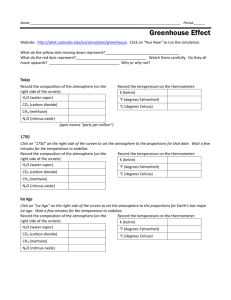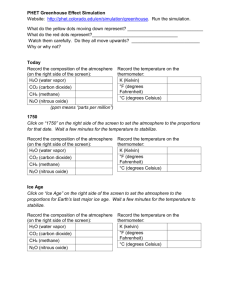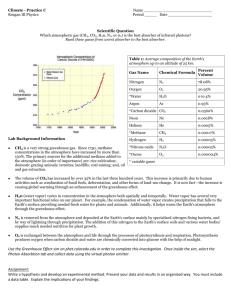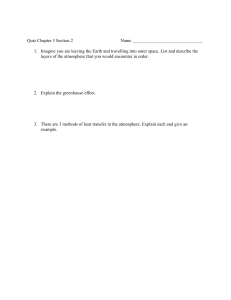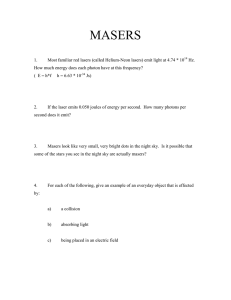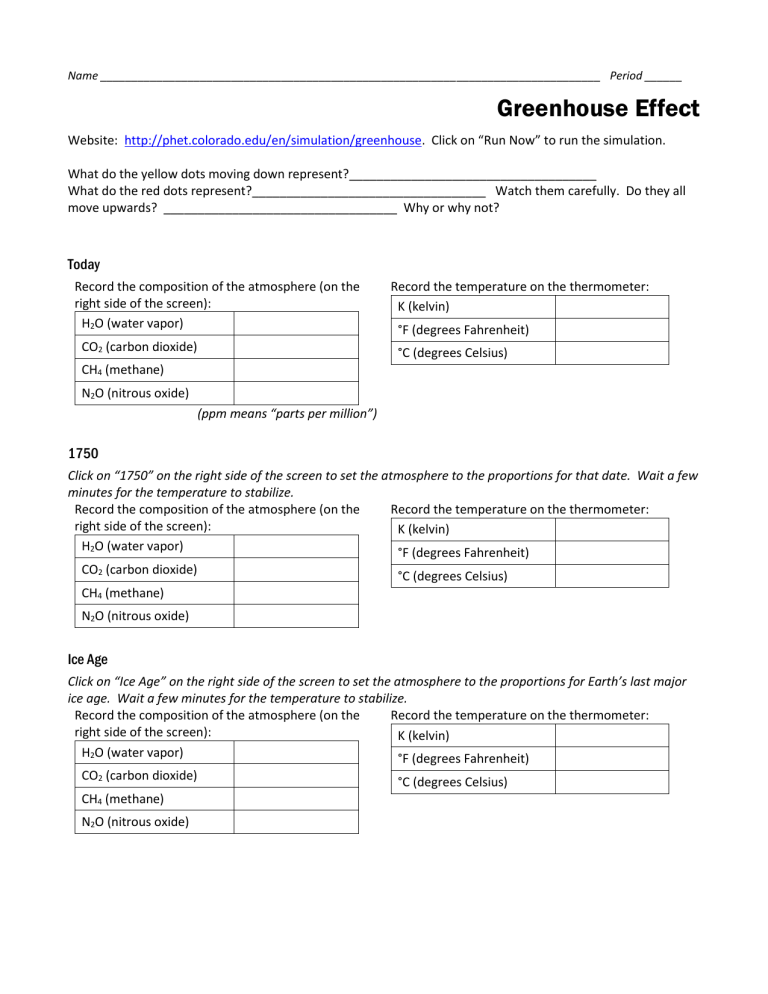
Name ________________________________________________________________________________ Period ______ Greenhouse Effect Website: http://phet.colorado.edu/en/simulation/greenhouse. Click on “Run Now” to run the simulation. What do the yellow dots moving down represent?____________________________________ What do the red dots represent?__________________________________ Watch them carefully. Do they all move upwards? __________________________________ Why or why not? Today Record the composition of the atmosphere (on the right side of the screen): H2O (water vapor) CO2 (carbon dioxide) Record the temperature on the thermometer: K (kelvin) °F (degrees Fahrenheit) °C (degrees Celsius) CH4 (methane) N2O (nitrous oxide) (ppm means “parts per million”) 1750 Click on “1750” on the right side of the screen to set the atmosphere to the proportions for that date. Wait a few minutes for the temperature to stabilize. Record the composition of the atmosphere (on the Record the temperature on the thermometer: right side of the screen): K (kelvin) H2O (water vapor) °F (degrees Fahrenheit) CO2 (carbon dioxide) °C (degrees Celsius) CH4 (methane) N2O (nitrous oxide) Ice Age Click on “Ice Age” on the right side of the screen to set the atmosphere to the proportions for Earth’s last major ice age. Wait a few minutes for the temperature to stabilize. Record the composition of the atmosphere (on the Record the temperature on the thermometer: right side of the screen): K (kelvin) H2O (water vapor) °F (degrees Fahrenheit) CO2 (carbon dioxide) CH4 (methane) N2O (nitrous oxide) °C (degrees Celsius) Glass Layers Click on the “Glass Layers” tab at the top of the screen. On the right side of the screen, set the Number of Glass Panes to “1”. Watch the yellow photons carefully. Do they pass through the glass or are they blocked? ___________________ Watch the red photons carefully. Do they pass through the glass or are they blocked? _____________________ (Move the slider at the bottom of the screen to slow down the animation if necessary.) Record the temperature on the thermometer: __________K, ___________ °F. Your family’s car has been parked outside on a cold but sunny day. When you get in the car, it is much warmer than the air outside. Explain how this can happen. Photon Absorption Click on the “Photon Absorption” tab at the top of the screen. A methane molecule sits in the middle of the screen. Use the slider on the left side of the screen to shoot some infrared photons at the molecule. Do all the photons pass through the molecule? ____________________ When a photon gets absorbed, what happens next? ______________________________ _______________ When a new photon is emitted, is it always sent in the same direction? _________________________________ Use the buttons on the right side of the screen to test different molecules. Record your observations in the table below. Write “yes” if any photons get absorbed; write “no” if no photons get absorbed. Which gases absorb photons? Infrared Photons Visible Photons CH4 (methane) CO2 (carbon dioxide) H2O (water vapor) N2 (nitrogen) O2 (oxygen) Which three gases contribute to the greenhouse effect in our atmosphere?____________________________ Which two gases do NOT contribute to the greenhouse effect? _______________________________________
